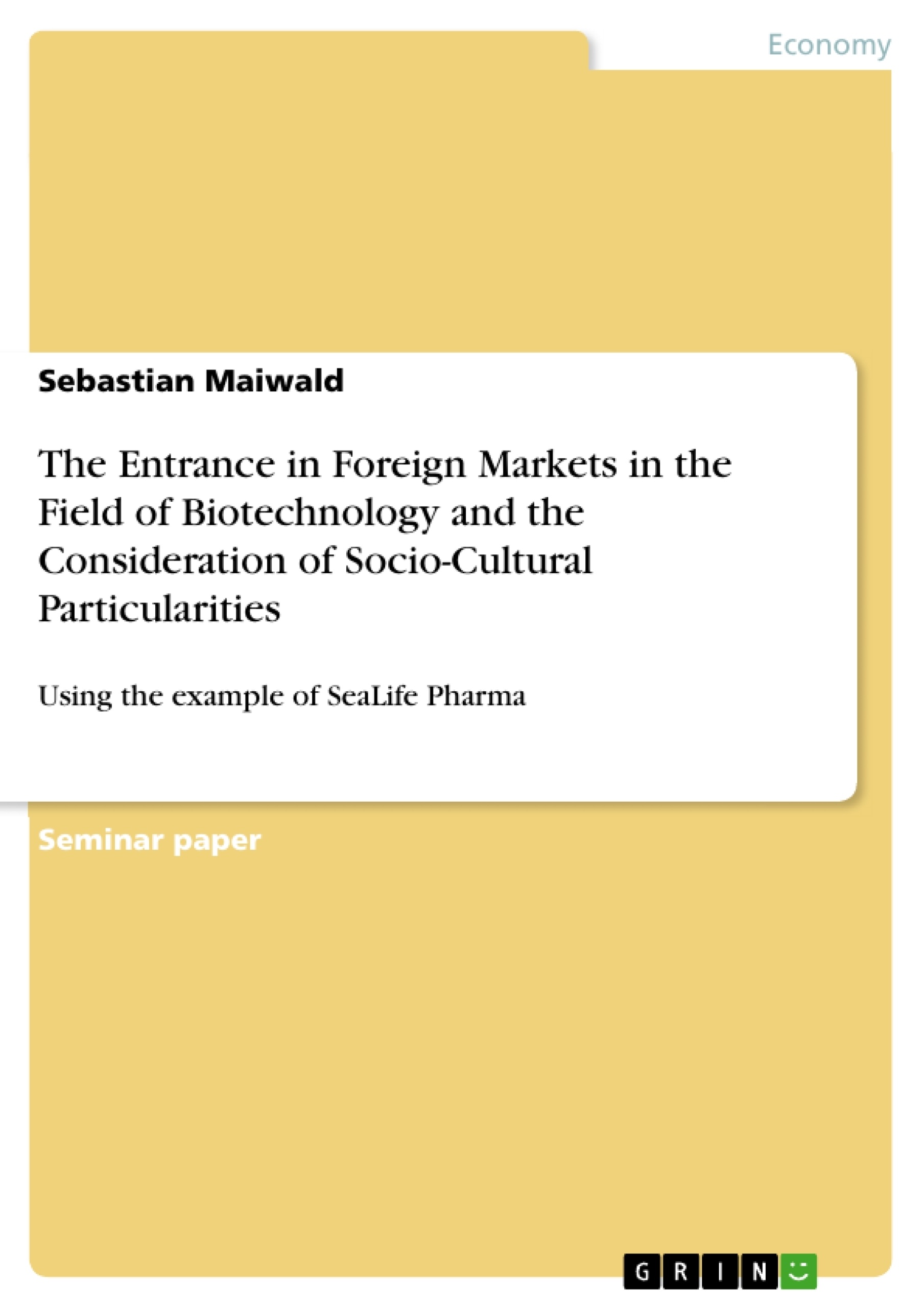This paper describes the term biotechnology and how a small Austrian startup enterprise could enter into foreign markets. The paper combines knowledge of Intercultural and International Management constantly referring to biotechnology.
This paper is divided into 3 major chapters. The second chapter defines biotechnology generally and furthermore gives an insight in marine biotechnology using the example of a concrete enterprise. Afterwards cultural and socio-political particularities in the fields of biotechnology are explained based on Austria where this startup enterprise is headquartered and currently operating. The fourth chapter concentrates on concrete foreign market entry strategies which could be
applied by this startup enterprise. Finally every aspect is summarized and a final recommendation is given.
Inhaltsverzeichnis (Table of Contents)
- 1. Introduction
- 2. Biotechnology
- 2.1 Modern Biotechnology
- 2.2 Marine Biotechnology
- 2.3 SeaLife Pharma
- 3. Austria
- 3.1 Austria according to Hofstede
- 3.2 Austria's attitude in the fields of biotechnology
- 4. SeaLife Pharma enters into foreign markets
- 4.1 Licensing
- 4.2 Strategic Alliance
- 4.3 Final Recommendation
- 5. Conclusion
- Appendix
- List of sources
- List of literature
- List of internet sources
Zielsetzung und Themenschwerpunkte (Objectives and Key Themes)
This seminar paper examines the entrance into foreign markets, specifically focusing on the field of biotechnology. It uses the example of SeaLife Pharma, an Austrian startup, to illustrate the consideration of socio-cultural particularities in this context.
- The importance of biotechnology in addressing pressing societal issues, such as the need for new therapies and sustainable solutions.
- The challenges of antibiotic resistance and the need for innovative antibiotic development.
- The role of socio-cultural factors in market entry strategies, particularly in the context of Austria's unique cultural characteristics.
- An analysis of various market entry strategies, including licensing and strategic alliances.
- The importance of considering local market needs and preferences to achieve successful market entry.
Zusammenfassung der Kapitel (Chapter Summaries)
The paper starts with an introduction that highlights the significance of biotechnology in tackling crucial societal issues, particularly in the field of medicine. It delves into the challenges posed by antibiotic resistance and the imperative for developing innovative antibiotics.
Chapter 2 provides a comprehensive overview of biotechnology, focusing on both modern and marine biotechnology. It also introduces SeaLife Pharma, an Austrian startup enterprise operating in the field of marine biotechnology.
Chapter 3 focuses on Austria, exploring its socio-cultural landscape using Hofstede's cultural dimensions. It examines Austria's attitude towards biotechnology, highlighting its specific regulations and considerations.
Chapter 4 delves into the various strategies SeaLife Pharma can utilize to enter foreign markets. It analyzes the advantages and disadvantages of licensing and strategic alliances, ultimately providing a final recommendation based on the specific context of SeaLife Pharma.
Schlüsselwörter (Keywords)
The paper focuses on key concepts such as biotechnology, antibiotic resistance, socio-cultural particularities, market entry strategies, licensing, strategic alliances, and the Austrian market. It explores the interface between scientific advancements, cultural considerations, and business strategies in the context of the biotechnology sector.
- Citar trabajo
- Sebastian Maiwald (Autor), 2010, The Entrance in Foreign Markets in the Field of Biotechnology and the Consideration of Socio-Cultural Particularities, Múnich, GRIN Verlag, https://www.grin.com/document/145283



